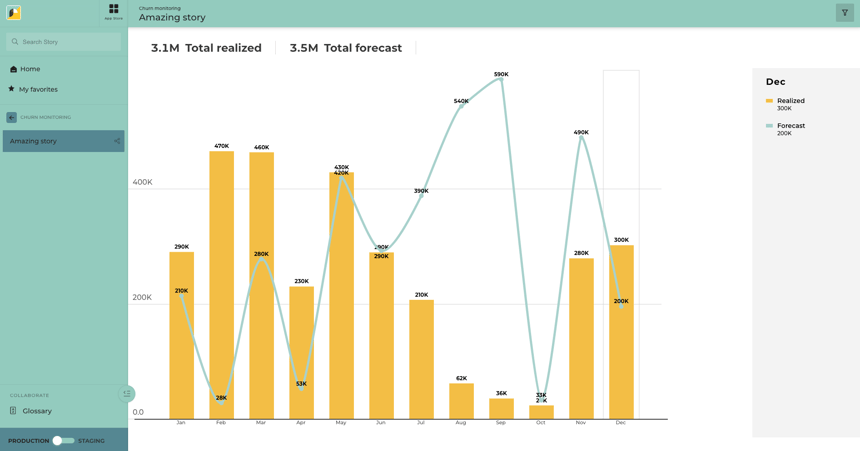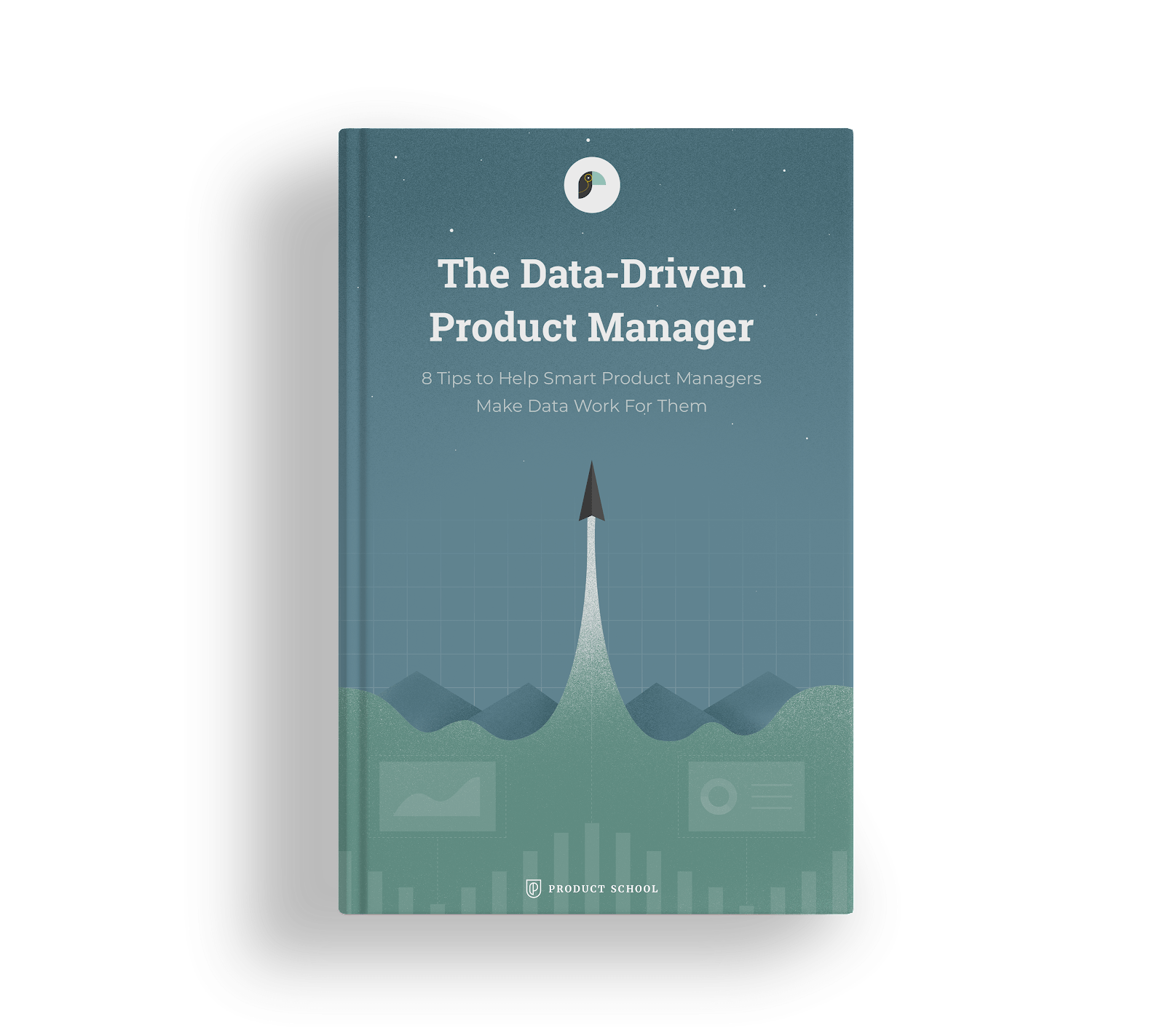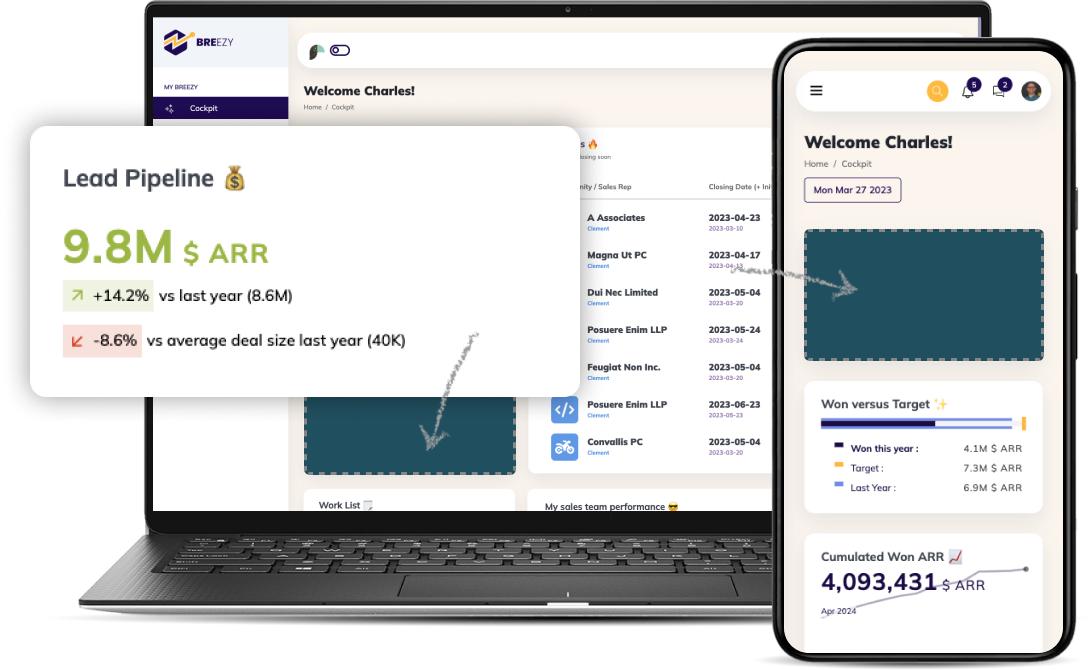This article has been reviewed and approved by Jérémy Giffard-Quillon, analytics project manager and product specialist at Toucan.
Table of content
- What is embedded analytics?
- How embedded analytics work
- The 4 Advantages of embedded analytics
- How to navigate a successful embedded analytics project
What is embedded analytics?
Let's embark on a journey of demystifying and defining embedded analytics. Simply put, embedded analytics involves seamlessly integrating analytics functionalities directly into third-party applications, such as platforms, web applications, sites, and intranets. Unlike traditional analytics that rely on separate tools, embedded analytics empowers users to delve into and dissect data without leaving their usual digital environment.
Embedded components can take many different forms, ranging from interactive visualizations and dynamic dashboards to insightful reports. Once integrated, these components enable users to explore data with filtering systems, interact with dynamic visualizations, and craft tailor-made reports, all within familiar applications. It's a great way to add value to data that is often already collected. All you have to do is put it out there for everyone to see, and all the investment you've made in collecting, storing and transforming it will be viable. It's an easy way to present the information to audiences that are often non-data-specialists and have an impact on informed decision-making.
It's worth noting that today, many non-analytics SaaS tools are developing these so-called "embedded" functionalities. For example, Treezor offers an embedded finance tool, while Frontegg and Curity.io are developing authentication management systems ready for embedding. This trend is pivotal in the industry, as it removes the need for companies to develop digital solutions to build every aspect from scratch.
Users have increasingly high expectations, demanding even fledgling applications to offer conveniences like Google account logins to avoid the account creation stage and integrated analytics in management tools. This paradigm shift in software distribution caters to the exigency of swiftly launching viable products, serving both internal teams and discerning customers.
This new way of distributing a software product caters to companies who must quickly launch a viable product without building everything from scratch, serving both internal teams and discerning customers.
For this article, we'll confine our focus to embedded analytics, investigating the mechanics behind embedded dashboards and embedded data visualization tools.
How embedded analytics work
To begin, you'll gain access to a comprehensive analytics platform. Here, below, you can experience our analytics platform: Toucan

Within such a solution, you'll plug in your data sources, and craft the elements to be embedded. While component creation may vary across tools, the underlying principle remains the same: you obtain a line of code, a script to be copied, tailored to the component to embed within the third-party application.

It is possible to embed just one graph or even a whole dashboard:
.png?width=600&height=386&name=Playground%20Gab%20Group%20(9).png)
Embedding the component is straightforward. Simply paste the provided script into the codebase of the target application. The analytics component then loads in tandem with other elements on your page. You can pick, depending on the need, an iFrame or a Web component.
Although many customization options are generally available, a little specific development may be required to make the integration perfectly coherent, aligning with the holistic experience, and creating an illusion of a singular unified platform.
And here's the result! For this example, the components have been seamlessly embedded into a fictitious third-party application, showcasing a selection of the tiles introduced earlier. For deeper insights on this, see our embedded analytics technology page.
Video: embedded analytics workflow
That was a quick tour of the features behind the name "embedded analytics". Now let's take a closer look at the benefits of this technology and its applications.
4 advantages of embedded analytics
1. Elevate the user experience with a tried and tested analytics solution
Analytics and data visualization are disciplines in their own right. Building compelling graphics within a product isn't something you can improvise, without substantial investment (and a fair amount of risk-taking), you'll end up with average visualizations of little interest to users. Remember, the goal is to improve the user experience.
Relying on third-party software is a good way to benefit from sophisticated designs, a library of ready-to-use graphics and the best practices of specialists. At Toucan, for example, we have invested heavily to infuse data storytelling principles into our product components, making this knowledge more accessible. With the right product, isolated knowledge becomes centralized and collective, enhancing user experiences.
With software running under the Software as a Service (SaaS) model, updates are free and continuous. You get access to new features on a regular basis, and any concern of ending up with out-of-date graphics are removed.
2. Fast time to market: get real-time user feedback
Swiftly introducing a new feature and gathering user feedback are quintessential for any product. This is an essential step for testing a new feature that can be time-consuming. By purchasing a solution, you can quickly deploy and garner invaluable insights, subsequently giving you time to tailor the off the shelf offering to fully address user needs.
3. Risk mitigation and capital efficiency - why build if the market isn't clear?
When launching a new product or feature, it makes sense to test and build the first proofs of concept (POCs) without investing too much time and money. Internal teams spanning design, product, development, and infrastructure are all involved to orchestrate the launch. And costs can quickly escalate. While the initial pitch is often simple: "two visualizations and three KPIs to start with," it ends up involving around twenty people. Instead of investing upfront (with no guarantee of results), opting for phased investments and evaluating the initial Return on Investment (ROI), market sentiment, and competitor reactions hedges risks and streamlines progress.
With the streamlined process, the first data and user feedback is collected quickly, and you can assess whether the new functionality is meeting expectations. Collect your first data on usage rates, click-through times, and above all, start considering whether you need to develop an in-house solution to meet 100% of users' needs.
4. Access expertise and delegate technical burdens
A software project is complex and inevitably accompanied by unforeseen challenges. The impact of expert guidance is often underestimated when purchasing a software solution. Working with experts in the field will reinforce in-house expertise and remove the need for specialized requirement. Also, buying a solution means outsourcing technical problems.
The mental load generated by maintaining an in-house tool is considerable. Delegating all the technical burdens and complications to the editor will protect your teams and keep them focused on the core of your product. Always remember to take this into consideration before you embark on development.
How to navigate a successful embedded analytics project
Evaluate your specific analytical prerequisites and objectives
- Start by assessing your precise analytical needs and goals. Identify data sources, quantify volumes, etc. and you'll have your first criteria for selecting your tool. Ask yourself: What are your end-users' needs, and what functionalities should they have access to? If you have a team of developers, but prefer your product team to be autonomous, then we advise going for a "no-code" approach.
Choose an embedded analytics platform with minimal legacy
- Look for a high-performance, flexible solution capable of seamlessly integrating into your application. Prioritize platforms that accompany the technological integration with robust onboarding, thorough documentation, enriching training resources, and responsive technical support. These are the foundations of a successful project.
Integrate the analytical solution that aligns with your data ecosystem
- Work with your development team to seamlessly integrate this new tool into your existing data infrastructure. Consult your teams to take into account constraints and security needs. The bedrock of impactful analysis rests upon a coherent data stack.
Empower your team with training on tools and technologies used
- Once the project has been deployed, organize training sessions to maximize your team's understanding of this new software. Fostering a deep understanding of the software impact, value and objectives fuel adoption and boost your utilization rates. Whatever the size of your project, it's always important to include a change management component.
Conclusion
In essence, embedded analytics can be a great solution for companies looking to add an analytical component into their offering.
In a nutshell:
- Embedded analytics means creating an analytics component and integrating it, via a script, into a third-party platform, and avoiding in-house development of this component.
- It's often cheaper to buy than to develop and maintain an in-house solution.
- It's a vast market. Many SaaS software products offer "embedding". Make sure you clearly define your needs and objectives. Is it analytics? A dashboard? Reporting? Data visualization? Data exploration? And for whom?
- Don't forget change management, both for your teams and for your users. It's a key element in achieving an attractive usage rate. Nobody wants to pay for unused licenses.
Embedded analytics offers a powerful approach to harnessing the full potential of data within your application, and at Toucan, we can show you how. Visit our site, and request a demo with our team of experts!






